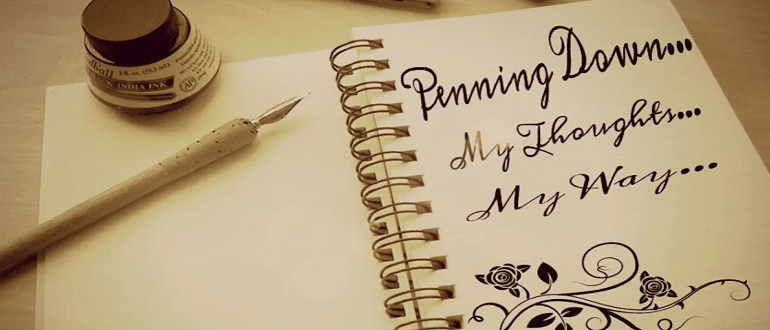A clinical psychologist and founder offers tweet-length explanations of some of the most useful concepts in her field.
If you’ve checked out The New York Times recently, you may have noticed the paper just launched a big new package on the root causes of America’s mental health crisis. As this is a problem that touches just about all of our lives, I clicked through. As I scrolled, I came across a link that interested me more as an Inc.com writer than as a concerned citizen.
“We are talking more and more about our mental health,” writes psychologist Huw Green in one article (this is very much true in the world of entrepreneurship). “In the United States, Dr. Emily Anhalt produces elegant aphorisms and promotes the virtues of psychodynamic psychotherapy on Twitter,” he adds, in the course of listing a number of experts who excel at popular communication around mental health issues.
As someone who is fascinated by the human side of business and who often writes about the benefits of bringing psychological insights to work, I speedily clicked on the link. And what a gold mine I found.
Anhalt is a clinical psychologist and co-founder of Coa, a startup that bills itself as the first ever “gym for mental health.” As Green noted, Anhalt is also a social media pro tweeting pithy, entertaining insights. Perhaps the most useful of these were pinned to the top of her timeline — a long thread offering succinct explanations of dozens of the most useful concepts in psychology all explained in 280 characters or less.
Some of them — such as “evenly suspended attention” — appear quite therapist-specific at first, but quick reflection indicates they could be just as useful for performance review conversations as psychotherapy. Other concepts, such as gaslighting and omnipotent fantasy, are workplace standbys.
Taking the time to understand them will make you better at understanding human beings, and that will make you better at just about any job, so here they are in an easy-to-read format. You can check out the complete thread on Twitter to see the jokey memes and real-life examples Anhalt links to, as well as the fascinating conversation her tweets kicked off. I’ve added my own links to further reading or examples in a few instances as well.
-
Intellectualization: “using reason & intellect to avoid feeling our emotions. Intellectualizers are more comfortable with logic & rationality than emotionality and are good at speaking through things without actually feeling them. This can be a strength but also a problem.” Meditation teachers also caution against letting your cleverness get in way of your wisdom.
-
Fear of Breakdown: “the things we fear the most are things that have already happened to us but were too painful to consciously experience at the time. Ex: my fear of bad things happening is a fear of facing the bad things I’ve already experienced.”
-
Sublimation: “one of the healthier defense mechanisms — taking socially unacceptable impulses or desires and channeling them into socially acceptable actions or behaviors. Ex: taking a boxing class to deal with anger and aggression.”
-
Acting Out: “when we are unable to voice repressed thoughts or feelings, we sometimes act them out through behavior. Ex: showing up late to therapy or forgetting payment instead of realizing and telling the therapist that we’re upset with the treatment.”
-
Survivor Guilt: “a feeling we sometimes have when we survive or thrive in ways that loved ones are not surviving or thriving. We might unconsciously avoid or sabotage success to get rid of this guilt. Ex: not going after a promotion because your partner just got fired.”
-
True Empathy: “allowing yourself to actually feel what someone else is feeling in order to understand them. If you intellectually understand what someone is feeling but don’t feel it yourself, that’s not empathy – it’s sympathy. True empathy can be uncomfortable and difficult.”
-
Capacity to Be Alone: “a paradoxical ability to be alone while someone else is present. This is a developmental achievement that not everyone reaches. Imagine the child who can self-entertain while parents are nearby vs. the one who needs to be entertained in every moment.”
-
True Self/False Self: “when we’re young, we borrow our identity from others (our false self). If given the freedom to explore, we get rid of false parts as we discover our true self – but, we often hold onto false parts (w/out realizing it) out of fear of disappointing others.” Tons of research suggests you’re really going to regret not letting go of that false self.
-
Psychosomatization: “physical manifestations of emotional states – often happens because we’re unable to feel things emotionally. Ex: feeling nauseous when what you really are is anxious. ‘We store our issues in our tissues.'”
-
Complex Trauma: “when something traumatic happens before we’ve had the time, resources, & support to recover from a previous traumatic experience (ad infinitum). Becomes increasingly difficult to heal (think of a repeatedly injured muscle that is never given any recovery time).”
-
Repetition Compulsion: “our tendency to recreate things over & over until we understand them. Ex: finding yourself in the same kind of relationship again & again but not understanding why/being unintentionally attracted to work environments that mirror your family dynamic.”
-
Parapraxis: Also Known as a Freudian Slip. “A parapraxis is an unintended action that might seem like a simple accident or coincidence but actually points to a repressed or uncomfortable truth that we are avoiding.”
-
Flight Into Health: “occurs when we seem to make a ‘spontaneous recovery’ when faced with addressing particular issues in therapy. Ex: I’ve been talking about something painful when suddenly I feel ‘totally better’ & decide that therapy has worked and I’m ready to stop going.”
-
Gaslighting: “a manipulation technique in which we use psychological means to trick someone into questioning their own sanity. While gaslighting is sociopathic in its extreme form, we all engage in subtle forms (Ex: saying, ‘I don’t know what you’re talking about’ when you do).” As many of us unfortunately know, gaslighting is a workplace staple at some companies.
-
Extreme Envy: “envy that leads to a desire to destroy something another person has that you want, not because you don’t want the other person to have it, but because them having it forces you to confront your feelings about not having it.” Note: Experts claim there is also such a thing as healthy envy that pushes us to become better versions of ourselves.
-
The Good Enough Parent: “a ‘perfect’ parent does not prepare their child for an imperfect world. The ‘good enough’ parent meets their child’s needs enough of the time that the child feels safe, but not so often that the child never learns to adapt to unfavorable circumstances.” Here’s a huge study saying much the same thing.
-
Autoplastic Versus Alloplastic Adaptation: “appropriately & advantageously adapting our own self to our environment (meditating so we can handle stress) vs. appropriately & advantageously adapting our environment to meet our needs (choosing a job that complements our work style).”
-
Reaction Formation: “a defense mechanism where we worry that our true feelings or desires are unacceptable, so we attempt to convince ourselves or others that we feel the opposite way, often in a very exaggerated performance.” The example Anhalt gives is rabidly anti-LGBTQ+ politicians who get caught having furtive same-sex encounters.
-
Bastion: “when a therapist doesn’t see an unhealthy dynamic with a patient because they’re invested in it continuing. Ex: patient is being excessively complimentary to avoid facing their anger toward the therapist (see ‘reaction formation’), but the therapist doesn’t realize.” I can imagine there are quite a few bosses guilty of this too.
-
The Frame: “anything that provides reliable structure in therapy. Ex: starting & ending on time, being in the same room every week. If we can trust the stability of the frame, we are more likely to ‘come apart’ in therapy & thus access messy but important parts of who we are.”
-
Nameless Dread: “the dreadful feeling of emptiness and non-understandable anxiety that we face as infants (because we don’t understand our environment) but that we also face periodically throughout life.” Other people have this too? What a relief.
-
Manifest Versus Latent Dream Content: “the literal subject matter of a dream vs. the underlying meaning being symbolized. Ex: I dream of a motorcycle (manifest) to represent my desire to escape (latent).”
-
Healthy Narcissism: “narcissism has a bad rap but we all need a bit of it. Healthy narcissism is believing in yourself while maintaining an ability to enjoy the success of others. Kids whose belief in themself is not supported seek validation in unhealthy ways throughout life.”
-
Evenly Suspended Attention: “the therapist’s attitude of not directing their attention to any one thing in particular while listening to the patient. This prevents them from prematurely foreclosing the possibility of surprise and discovery of other important things.” This reminded me of a lot of career-related advice on how to be a better listener.
-
Omnipotent Fantasy: “the belief (which at its core, is really a wish) that we have more power over something than we actually do. Ex: Believing we can save people in our life from their pain, believing that if we worry enough bad things won’t happen.”
-
Transitional Object: “an object that represents a parent, which allows a child to transition from being totally dependent to somewhat independent. Ex: teddy bear or blanket. Adults have them too. Ex: keeping a memento from a loved one so you feel close to them in their absence.”
-
Free Association: “a technique in therapy where you freely share any thoughts going through your mind without censoring yourself – your words don’t need to be coherent or ‘relevant.’ This allows you to access deeper unconscious material & discover unexpected thoughts.”
-
Splitting: “putting all of our good feelings in one place and our bad feelings in another, because it’s difficult to hold them at the same time. Ex: being very angry with one of your parents while being very forgiving of the other, even though neither is terrible or perfect.”
-
The Depressive Position: “when we can stop splitting (see above) & tolerate the fact that nothing is all good or all bad. Called the depressive position because it’s depressing! Holding both at the same time requires maturity and compassion.”
-
Reality Testing: “the process of helping someone distinguish their thoughts, feelings, & fears from what’s objectively true in reality. Ex: If a patient says everyone hates them, a therapist might point out external evidence that suggests otherwise.”
Feature Image Credit: Getty Images





